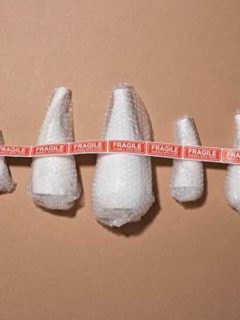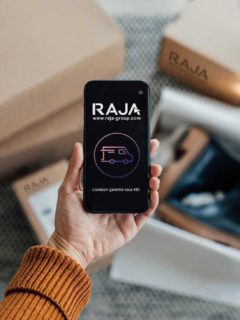130 kilos: that’s the average amount of waste an office worker produces each year in the course of their work*. Yet 83% of them still think that waste management in their company is not optimal**.
At a time when managing and sorting waste in companies is as much a matter of CSR as employer branding, you need to look at a real strategy in this area.
To help you do this, we’ve put together eight best practices to significantly improve waste management and sorting in your company. Now it’s up to you!
Take stock of your company’s waste collection needs
Good waste management in a warehouse or company always starts with an audit of your existing management process. The idea is to gain a detailed understanding of your needs in terms of waste collection and sorting within your organisation.
To do this, start by assessing the volume of waste produced in your company every day. Your calculation should separate the five typical waste streams:
- Paper and cardboard
- metal
- Plastic
- glass
- wood
As you no doubt know, each of these streams is treated differently by the sorting centre responsible for it. You can multiply the volume of the collection bin you use by the number of times your waste is collected per week, for each of the five streams.
For example, your “traditional” household waste may be collected by the services of the commune (or community of communes) where your premises are located, while green waste or hazardous waste will have to be dealt with by other specialist services.
If necessary, don’t hesitate to ask your Chamber of Commerce and Industry (CCI) or your Chamber of Trades and Crafts (CMA) to help you estimate your waste management needs.
Putting in place the right containers for sorting waste in the workplace
Once you know how much waste you have to deal with each week, you need to put the right containers in your business. Your employees need to be able to easily identify which bin is for which waste stream.
So make sure you have :
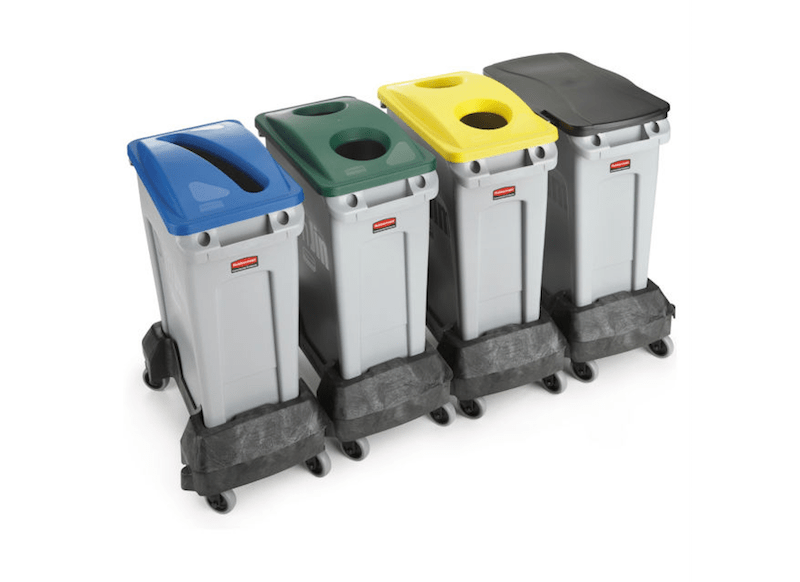 |
Containers and bins that distinguish between the five waste streams at a glance. |
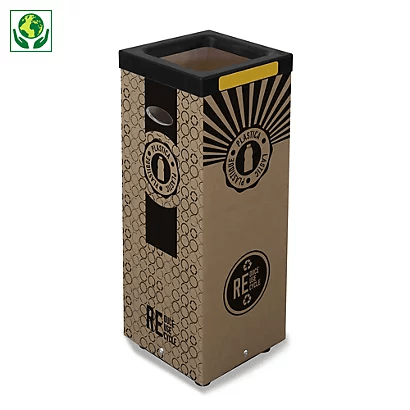 |
Indoor bins that are also adapted to the five waste streams: wastepaper basket, bin for recyclable waste, sanitary bins, etc. |
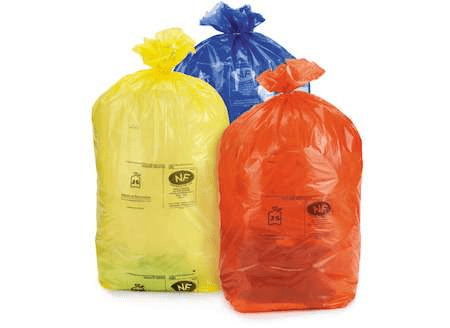 |
Different coloured bin linersto highlight the differences between the containers. |
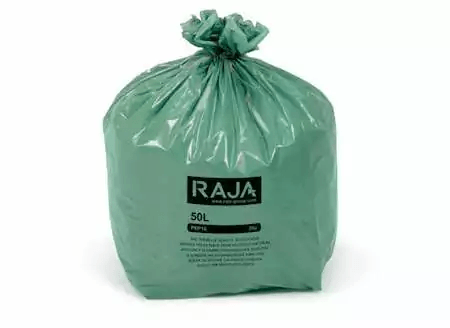 |
Recycled bin liners for your green bin, which can go straight into the appropriate sorting channels. |
Need to equip yourself with this crucial waste sorting equipment? Visit the dedicated corner of the RAJA online shop.
Make sure you place these containers in key locations that are easy for employees to access. For example, the bins for recyclable waste should be in the lunchroom and near the coffee machine for disposing of cups, while the bins for the paper stream should be near the printers and in each office.
Limit printing in your company
One of the easiest sources of waste to limit (and therefore manage) in your business is paper. The key to doing this is to limit your staff’s printing as much as possible.
There are a number of tips that can help you reduce the amount of printing you do on a daily basis:
- Use print management software, which limits waste due to printer errors.
- Promote the reduction of printing, by favouring digital storage of important documents and incorporating this message into your internal communications.
- Give preference to double-sided and black and white printing, by setting printers to print in this way by default.
Also remember to fill your printers with recycled paper. Just one more eco-responsible gesture to support your CSR strategy.
Extend your zero-waste policy to your IT equipment
Did you know that the manufacture of IT equipment accounts for 29% of energy consumption and 54% of greenhouse gas emissions in a typical company***?
To limit this environmental impact, you need to include IT equipment in your eco-responsible policy. By doing so, you will limit the amount of waste associated with it.
To do this:
- Choose a service provider that rents reconditioned IT equipment rather than buying new.
- Recycle your computer waste, including printer cartridges.
- Donate your equipment to charities if you are replacing it.
Compost your bio-waste
Bio-waste such as kitchen and table waste and green waste can be composted. So why not consider installing a compost bin in one of your outdoor areas, and use the compost produced in your plants?
It’s a fun way to get your staff involved in waste sorting.
Make eco-responsible crockery available
Another key to good waste management in your company is to limit the use of single-use, non-recyclable crockery by your employees.
There are several ways of doing this:
- Recyclable cardboard cups, to be placed near the coffee machine.
- Reusable crockery, such as glasses, mugs, cutlery and plates.
Make sure your employees take responsibility for their use. They should not abuse paper cups, and make sure that reusable crockery is washed so that it is always available.
Include your cleaning service provider in your waste management policy
The company responsible for cleaning your premises plays a crucial role in your company’s waste sorting process. It is often the company that places the bin bags in the containers that will be sent to the various sorting centres.
That’s why it’s so important to explain your waste management policy to this service provider, so that they can follow the process too. You might also consider supplying them with eco-responsible cleaning products.
Run a large-scale awareness-raising campaign among your employees
One last crucial piece of advice if you want to make your waste management and sorting initiatives sustainable: launch a massive campaign to raise awareness of the issue among your employees. The aim? Explain to them the benefits of sorting waste in the workplace, so that it makes sense, and get them to adopt the right reflexes on a daily basis.
As part of this, make sure you use a range of communication tools to encourage them to adopt environmentally responsible practices: posters, newsletters, events, etc. You can also appoint ambassadors: these employees, who are motivated by the subject, will be able to continue this awareness-raising work alongside you, on a daily basis, in the field.
Are you ready? Implement these eight best practices in your organisation now, and improve waste sorting in your company for the long term!
* Source: ADEME study
** Source: Riposte Verte study
*** Source: WeGreenIT study













